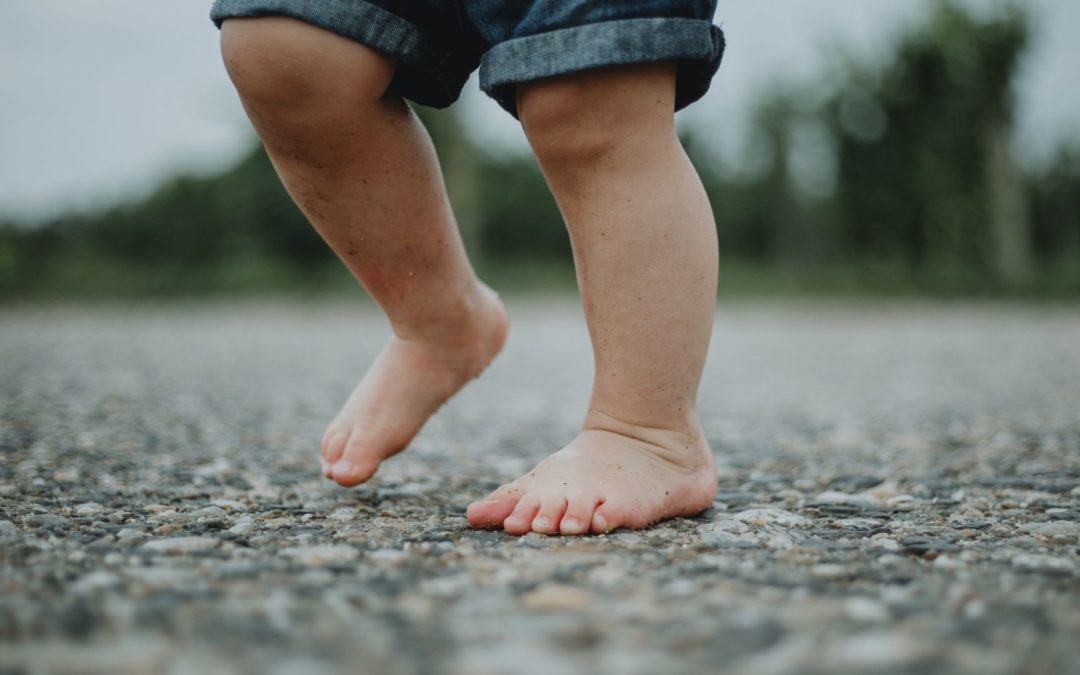By Jo Fletcher
It’s early in the morning and you have finally got the kids in the car, ready in time for the first time in ever to drop the kids at school, day care, then off to work. Great success!
You get to daycare, unstrap little Billy only to realise Billy’s shoes are on the kitchen counter at home. A quick look at the watch and your chance at actually making it to work on time goes out the window – do you risk dropping Billy off without shoes? You decide to risk it!
You make your way into Billy’s room and put him down, noticing for the first time most of the children don’t have shoes on anyway. You relax a little more and explain your situation to Billy’s fave educator, and she laughs and tells you not to worry, and that shoes aren’t good for developing children’s feet anyway which is why it’s fine that he doesn’t have any shoes.
Children don’t need to wear shoes. In fact, there is a lot of research now that suggests going barefoot is a potentially health-changing act we could all be implementing more, both children AND adults. When children go shoeless, they strengthen muscles in their feet and ankles, which improves balance and posture. It strengthens the little arches in their feet, and helps prevent stability problems when they are older like joint problems in hips and knees. On top of the physical benefits of going barefoot for children, studies show that going shoeless benefits children’s brain development as well.
Babies and toddlers being barefoot allows their uncovered feet to feel more. As babies move around and balance on different surfaces , the sensory information sent to their brains creates focus and awareness of walking and moving through different spaces. Simply put, it helps babies understand their feet more which helps their stability and balance and even confidence when learning to walk. Going barefoot on the grass, expanding their toes to move forward, the feeling of sand in the sandpit – all this would be lost if their growing feet were encased in shoes.
When babies grow into toddlers, and then preschoolers with more control of their movement and feet, they will learn balance, and learn how to climb and pivot and turn and adjust their movements to the environment below them. They will learn how and where to place their shoeless feet to achieve whatever outcome they are reaching for, not just to ensure they don’t fall, but also so they don’t hurt their feet. This will support their spatial awareness, body and eye movements and even their sense of timing – particularly if they take a jump and land well!
Children’s emotional development in not wearing shoes is also well documented. When children have a direct path to the earth through their feet, their brain recognises sensory and tactile input. Being aware of their environment will help children work through it and be part of it, stimulating healthy minds at the same time. Barefoot children immerse themselves in their world and connect more closely with the environment they are a part of.
The human foot at birth is nothing at all like a human adult foot. There are no bones at all – just cartilage which eventually become the bones of the foot – a process that isn’t complete until a child hits their late teens. It took about 4 million years for our amazing feet to evolve, and we can support our little ones growth and development by giving them lots of shoe-free time.
You might be worried about germs, but we are far more likely to pick up any kind of germs or illness from our hands, not out feet, and taking into consideration the context children are in – in this instance a child care or preschool – the space will be safe enough for the child to not wear shoes at all.
Going barefoot is a simple, highly beneficial practice which can be enjoyed by all so lose the shoes and let the thousands of nerves in our feet lead the way!


Recent Comments